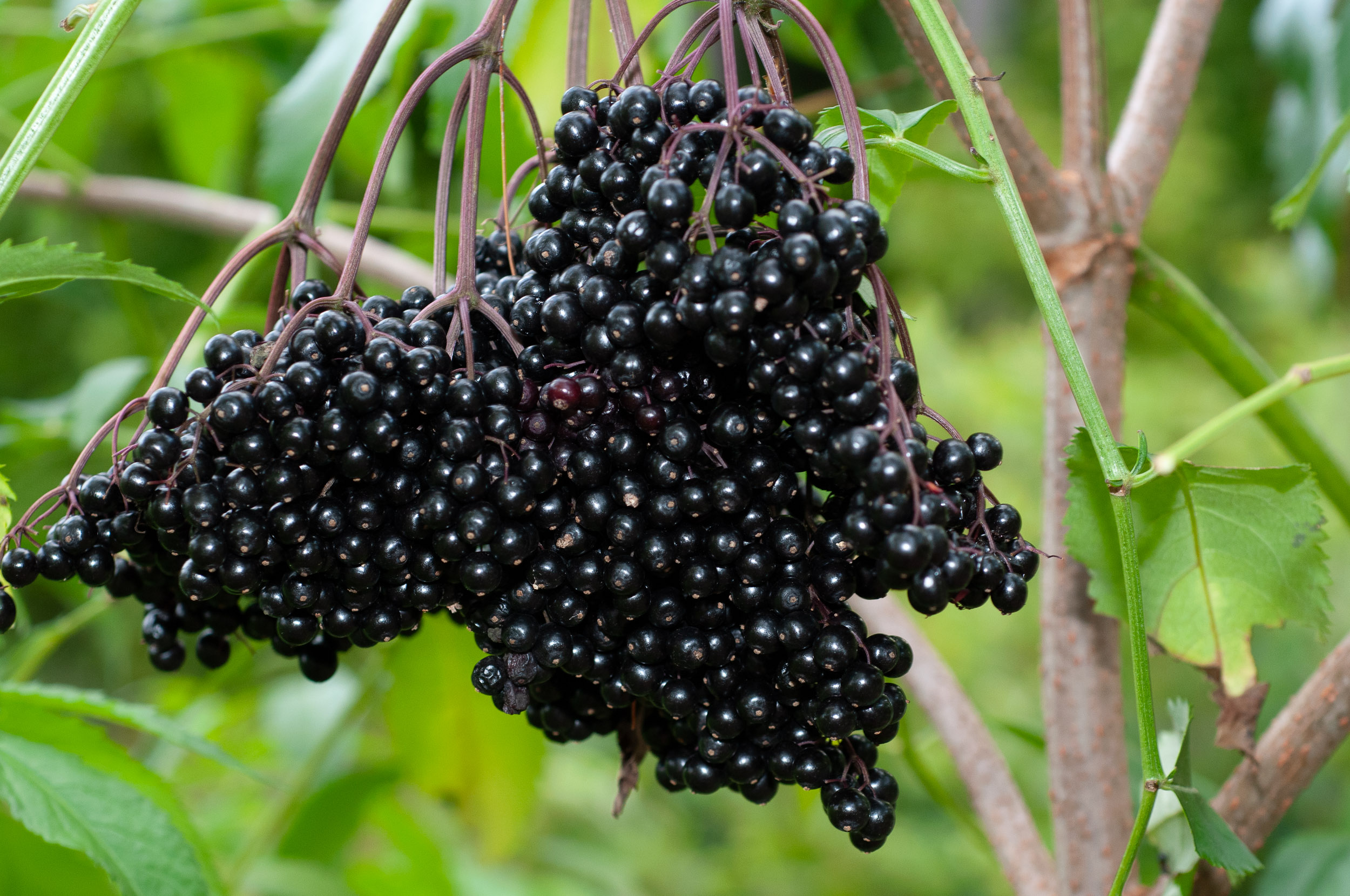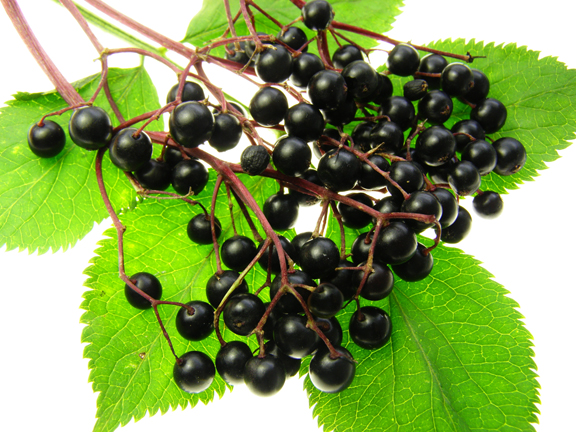Article from Body+Soul: link
Try Elderberries for Good Health:
Elderberries are a fruit that grow on certain species of the Sambucus tree. For thousands of years, every part of the elderberry tree has been put to some form of medicinal use. The flowers and leaves have been used to relieve pain, swelling or inflammation. The aged bark can be used as a laxative, diuretic or to induce vomiting.
However, it is the blue-black berry in particular that has a long history of medicinal and culinary uses. In 400 BC, Hippocrates apparently called the elder tree his "medicine chest".Elderberries are a rich source of flavonoids, which are both antioxidants and immunologics, meaning they stimulate the immune system.
Do they work?
Elderberry extract has been trialled for effectiveness in relieving the symptoms of influenza, bronchitis and bacterial sinusitis. In a range of placebo-controlled, doubleblind studies, elderberry extract has proven effective against a variety of flu viruses. A study at Hadassah University Hospital in Israel found that elderberry anthocyanins boost the production of cytokines, which increase the body's immune function.The study found that black elderberry extract reduced the duration of flu symptoms to three to four days and was effective against 10 strains of the flu virus.
A study published last year in the journal Phytochemistry found that elderberry flavonoids prevented swine flu (the H1N1 strain), and, also in 2009, a study undertaken by Retroscreen Virology at the London Bioscience Innovation Centre found that black elderberry extract was at least 68.37 per cent effective against the virus. Elderberry juice was used to treat a flu epidemic in Panama in 1995 and led to a reduction in severity and a faster recovery for many cases. It was found that 93.3 per cent of the cases treated with black elderberry compound experienced a significant improvement in their symptoms.
The pros
 Elderberries are a natural remedy for sinus and upper respiratory conditions. They also strengthen the immune system and reduce the severity and duration of colds and flu. The juice of elderberries has been shown to reduce excessive mucous secretion and some researchers believe that elderberries play a role in reducing the swelling of mucous membranes and improving sinus drainage. Elderberries are a rich source of vitamins A, B and C, potassium and antioxidants. Some research suggests they may be better than blueberries at fighting free radicals.
Elderberries are a natural remedy for sinus and upper respiratory conditions. They also strengthen the immune system and reduce the severity and duration of colds and flu. The juice of elderberries has been shown to reduce excessive mucous secretion and some researchers believe that elderberries play a role in reducing the swelling of mucous membranes and improving sinus drainage. Elderberries are a rich source of vitamins A, B and C, potassium and antioxidants. Some research suggests they may be better than blueberries at fighting free radicals.The cons
Too high a dose of elderberries can result in vomiting, diarrhoea or other stomach upsets. Raw and unripe berries contain cyanide, so ensure the elderberries come from a trusted source and are only consumed in recommended dosage levels.
When to avoid them
If you have any allergies to the Caprifoliaceae family (honeysuckle), it's best to avoid elderberries. Unless your doctor or healthcare provider suggests otherwise, pregnant or breastfeeding women should avoid elderberries. Unless you're following medical or professional advice, it's best to avoid consuming fresh or dried elderberries, or the dried flowers or bark, as the dose can be unpredictable. A commercially prepared form is the best option to ensure you take a measured dose.










